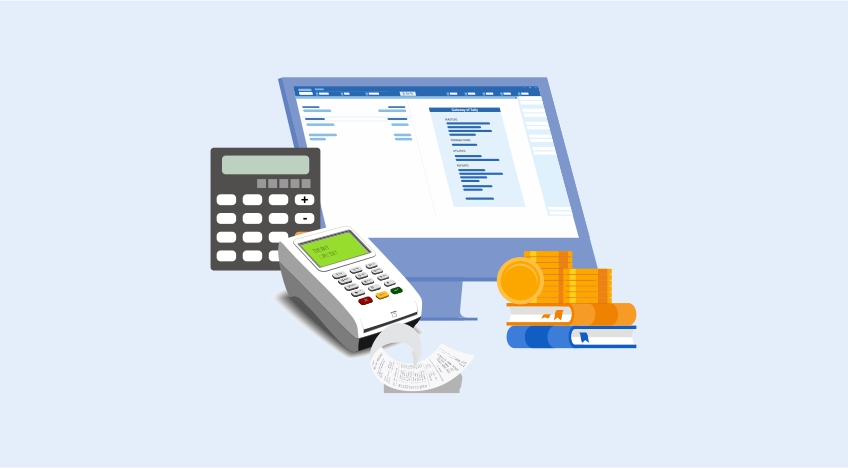- What is inventory management?
- Significance of inventory management
- Inventory management techniques for small businesses in Kenya
- TallyPrime for efficient inventory management in MSMEs
What is inventory management?
Inventory management refers to the process of identification of what stock to store and how much to store at which time. It involves tracking and recording inventory from the moment it is bought to when it is sold to the customers. The goal of inventory management is to always store sufficient goods to meet customer demand while minimizing excess inventory that can lead to an increase in costs. You will see that inventory is considered an asset on your balance sheet. Before it is sold, it ties up cash and after it is sold, it turns into revenue.
Numerous metrics exist that determine if inventory management is successful or not. One of those is the inventory turnover which is an accounting measurement. Inventory turnover tells you how much sock is sold during a specific period. An excellent inventory turnover ensures your inventory is turning to sales at a good rate. A poor inventory turnover means you have to hold stock which is called deadstock. This increases your carrying costs and leads to inventory storage inefficiencies which can eventually affect your production cycle. Inventory management is crucial to the betterment of your business as it avoids the situation of overstock and understock.
Significance of inventory management
Inventory management enables you to save money by cutting down costs associated with storing inventory in warehouses. When you store excess stock in your warehouses, space is being occupied. When the stock doesn’t get sold, then it soon becomes obsolete and becomes dead stock which is unusable thereby causing wastage. By eliminating this problem with the help of an inventory management system, you can better manage your warehouse space and reduce dead stock. This efficiency allows you to save money while fulfilling your customer orders. It also frees up the cost tied to overstock in your warehouse.
With inventory management, you are aware of how much stock you have in hand and where it is located. This enables you to get access to the inventory when you need it. An inventory management system allows you to rethink your inventory storage and costs. With the freeing up of costs by reducing excess inventory, you can improve your cash flow. This allows you to shift your focus on inventory that sells and that is in high demand. This enables cash to move freely in your business. It also enables you to spend money in your business where it is required and thereby improve your business.
Inventory management can improve customer satisfaction. Imagine that customers order a product as it is high in demand. If you are unable to fulfill their orders, they will seek similar products elsewhere eventually when their demands are not being met for a long time by your business. However, if on the contrary, you have sufficient stock at hand then you can ensure your customers always get the product on time when they place an order. This ensures customer satisfaction and can improve your business revenue by generating profits.
Inventory management techniques for small businesses in Kenya
When you are operating a business in Kenya, there are numerous approaches you can take to manage your inventory. Here are some tried and tested inventory management techniques that small businesses can use.
Opt for the FIFO approach
First in first out or FIFO refers to a method whereby you sell inventory that was purchased first. This means the new stock will only be sold after the old stock has been sold. The FIFO approach works best for businesses that sell perishable goods such as food items because they can become obsolete if they cross their expiry date. This approach can be successful for non-perishable items as well because it will ensure that older stocks get sold before the newer ones. It is a simple method and will work when you are selling the same type of item to your customers.
Economic order quantity
The MOQ or minimum order quantity defines the minimum stock that you should have ideally to minimize costs related to inventory. It is useful for a variety of businesses including MSMEs. It helps your business hold enough stock so that you are not overspending on the stock that might never be sold. It helps reduce inventory carrying costs too as you know the ideal inventory levels. It can improve order fulfillment and it ensures you are not wasting money or stock that can eventually become obsolete if not sold. You can even negotiate discounts with your suppliers as you will order in bulk.
Take time to forecast
Inventory management requires some form of demand forecasting based on historical data. You need to compare how much inventory was required in the past to determine how much might be possibly required at present. You need to also factor in the market trends to ensure you have sufficient inventory with you to meet demand. Forecasting will ensure you don’t end up with excess stock or a lack of stock when demand changes. When you have an inventory management system in place it becomes much easier to consolidate information and derive insights.
Be aware of stock
Many business owners in Kenya make the mistake of measuring their stock levels at certain points only. This is a big mistake and something you want to avoid if you want to grow. You need to have an inventory management system in place that allows you to keep track of your stock every single day. At any point in time, you should be able to get access to the inventory levels and instantly get the information that you need. You should be capable of knowing the expiry dates of the stock and when they were purchased too to ensure you can strategize and sell the stock accordingly.
Determine stock that isn’t sold for long periods
You want to keep track of items that are not being sold for months. Keeping such stock will only increase your warehouse costs and will take up valuable space there. When you determine such items, you can decrease re-ordering of those items as clearly the demand for such items is low. It is a futile attempt to store them in the hope that they will be sold someday. Instead, lower the inventory of such items to ensure only the ones that are high in demand are being stored in warehouses in places where your employees can get easy access to them. Sell the old stock by giving discounts on those items.
Just-in-time or JIT inventory management
One of the inventory management techniques is just-in-time or JIT inventory management. In this method, you order right before production begins to ensure you are not carrying excess inventory in advance. As the need arises, you can order the required quantities for replenishment and ensure the production can start. It works best when you are locally sourcing and when you are prepared for disruptions that can occur such as due to natural disasters. JIT is used by numerous large corporations today and it is a technique to consider if you have reliable and strong supplier relationships.
At the end of the day, the inventory management technique that you choose should depend on the type of business you are in, the industry you operate in, and what you sell.
TallyPrime for efficient inventory management in MSMEs
TallyPrime is a business management tool and accounting solution in one. It enables you to track your everyday expenses with ease. One of its features is inventory management. TallyPrime lets you manage your warehouse based on location in real-time. This gives you real-time insights and information on how much stock is available so you can make decisions on the spot for re-ordering if necessary. It provides you with simple stock management tools so that you can organize your stock as you wish. This allows you to manage your stock more easily for higher inventory management efficiency.
The inventory management software allows you to define a bill of materials whereby you know exactly what is required and how much is required to manufacture a complete finished product. It also gives you insights into job and project-wise costing. This allows you to be on top of the costs and revenue that is generated from the inventory as per your customers’ orders. Want to manage stock that you received from a third party? TallyPrime gives you the means to do that with ease and efficiency too. This can be a requirement in the case of consignment sales or if you are into the business of outsourcing/in-sourcing. It also enables you to record the manufacturing cycle details so you can improve inventory management.
TallyPrime’s powerful reporting feature is beneficial to MSMEs in Kenya because it ensures you are meeting your targets. You can generate reports such as re-order level reports, stock aging, and analyze the movement of your stock. Insightful reports empower every business to make informed decisions for their business. You can generate the view as per your requirements and save it to share it with key decision-makers. TallyPrime comes with other features such as invoicing, payroll processing, cash flow management, taxation, and banking. Try TallyPrime today to see what it can do for you!
Read More:










